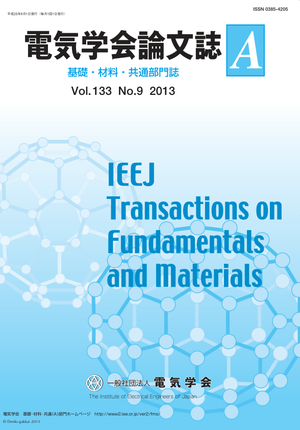The Effects of rTMS and tDCS on the Power and ERD of the Mu Wave
The Effects of rTMS and tDCS on the Power and ERD of the Mu Wave
カテゴリ: 論文誌(論文単位)
グループ名: 【A】基礎・材料・共通部門
発行日: 2013/09/01
タイトル(英語): The Effects of rTMS and tDCS on the Power and ERD of the Mu Wave
著者名: Kazuhisa Nojima (Graduate School of Systems Life Sciences, Kyushu University), Yoshinori Katayama (Graduate School of Information Science and Electrical Engineering, Kyushu University), Keiji Iramina (Graduate School of Systems Life Sciences, Kyushu Unive
著者名(英語): Kazuhisa Nojima (Graduate School of Systems Life Sciences, Kyushu University), Yoshinori Katayama (Graduate School of Information Science and Electrical Engineering, Kyushu University), Keiji Iramina (Graduate School of Systems Life Sciences, Kyushu University/Graduate School of Information Science and Electrical Engineering, Kyushu University)
キーワード: rTMS,tDCS,EEG
要約(英語): We investigated the effects of repetitive transcranial magnetic stimulation (rTMS) and transcranial direct current stimulation (tDCS) on the mu wave. The power of the mu wave decreases with the imagination of movement or actual movement. This phenomenon is described as the desynchronization (ERD) of the mu wave. The aim of our study was to investigate the effects of different rTMS and tDCS stimulation parameters on the mu wave. We used rTMS and tDCS to either facilitate or inhibit cortical excitability. EEG was measured over the sensorimotor cortex before and after stimulation. We performed four stimulation trials with different stimulus conditions: (1) 1Hz rTMS stimulation at 90% of the resting motor threshold (RMT), (2) 1Hz rTMS stimulation at 110% RMT,; (3) anodal tDCS,; and (4) cathodal tDCS over the motor area of the thumb in the left hemisphere. During EEG recording, participants were asked to (1) maintain a resting state, (2) imagine moving their right hand, or (3) actually move their right hand. We assessed the power difference and the amount of relative ERD before and after stimulation. We found no significant change in the power of the mu wave before or after rTMS or tDCS. Anodal tDCS, which produces facilitation, produced a significant increase in ERD. Both 1Hz rTMS at 110% of the RMT and cathodal tDCS, which produce inhibition, produced a significant decrease in ERD. We found no significant difference in ERD resulting from 1Hz rTMS at 90% of the RMT.
本誌: 電気学会論文誌A(基礎・材料・共通部門誌) Vol.133 No.9 (2013)
本誌掲載ページ: 478-483 p
原稿種別: 論文/英語
電子版へのリンク: https://www.jstage.jst.go.jp/article/ieejfms/133/9/133_478/_article/-char/ja/
受取状況を読み込めませんでした


